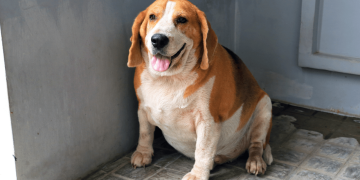Leash training is an essential skill for both dogs and cats, offering not only an opportunity for exercise and exploration but also safety and control in outdoor environments. Whether you’re a new pet owner or trying to improve your pet’s leash behavior, understanding the basics of leash training can help make walks more enjoyable and less stressful for both you and your furry friend. This guide covers everything you need to know about leash training, from getting your pet used to the leash to ensuring peaceful walks, whether you’re training a dog or a cat.
1. Why Leash Training is Important
Leash training provides numerous benefits for both pets and owners. It’s not only important for safety but also helps develop a stronger bond between you and your pet. A well-trained pet on a leash can enjoy more freedom, including outdoor adventures, trips to the park, and socialization with other pets.
1.1. Benefits of Leash Training
- Safety: A leash helps keep your pet safe by preventing them from running into traffic or getting lost.
- Exercise: Regular walks provide essential physical and mental stimulation for your pet.
- Control: Leash training gives you control over your pet’s movements, reducing the risk of undesirable behaviors like running away or pulling on walks.
- Exploration: With proper leash training, your pet can explore the outdoors with you safely.
2. Choosing the Right Leash and Harness for Your Pet
Before beginning leash training, it’s important to select the appropriate gear for your pet. Choosing the right leash and harness will ensure your pet’s comfort and safety during walks.
2.1. Selecting the Right Leash
- Length: A standard leash length is typically 4-6 feet. This length provides enough room for your pet to explore while giving you control.
- Material: Leashes come in a variety of materials, including nylon, leather, and cotton. Nylon is durable and easy to clean, while leather offers a more classic look. Choose a leash that feels comfortable in your hand and suits your pet’s needs.
2.2. Choosing the Right Harness
- For Dogs: A well-fitting harness is crucial for comfort and safety. A front-clip harness is ideal for leash training as it helps discourage pulling by redirecting your dog’s attention back to you. Avoid collars that put pressure on the neck, as they can cause injury, especially for dogs that pull.
- For Cats: Cats typically need a harness designed specifically for their body shape. Look for soft, adjustable harnesses that don’t restrict movement. A lightweight harness with a secure fit will keep your cat comfortable during walks without causing irritation.
3. Getting Your Pet Comfortable with the Leash and Harness
Before starting actual leash training, it’s essential to get your pet used to wearing the harness and leash. This may take some time, especially for pets who are new to the concept of being leashed.
3.1. Introducing the Harness and Leash
- For Dogs: Start by letting your dog sniff the harness and leash. Hold it in front of them, offering treats as positive reinforcement. Once they show interest, gently place the harness on them and allow them to wear it around the house for short periods. Use treats and praise to make the experience positive.
- For Cats: Cats are often more sensitive to new things, so introduce the harness gradually. Gently place the harness on your cat, ensuring it’s not too tight. Let them wear it for a few minutes while indoors, and gradually increase the time. Give them treats and praise to make the experience enjoyable.
3.2. Getting Used to the Leash
- Once your pet is comfortable with the harness, attach the leash and let them drag it around indoors. This will help them get used to the weight and feel of the leash without the pressure of being controlled.
- For Dogs: Encourage your dog to walk around with the leash attached, giving them plenty of praise and rewards for calm behavior. Keep sessions short and gradually increase the length of time they wear the leash.
- For Cats: Allow your cat to drag the leash for short periods indoors before attempting to guide them on the leash. If your cat resists, don’t force them—take it slow and be patient.

4. Training Your Pet to Walk on a Leash
Now that your pet is used to the harness and leash, it’s time to begin actual leash training. Patience and consistency are key to making walks enjoyable for both you and your pet.
4.1. Start Indoors
- For Dogs: Begin practicing indoors in a familiar, distraction-free environment. Start by walking around the house with your dog on the leash, using a positive, calm voice to encourage them to follow you. If your dog pulls or lags behind, gently guide them in the right direction using the leash, avoiding tugging or jerking.
- For Cats: Practice walking your cat indoors in a calm space with low distractions. Start by guiding them in small circles, offering treats and praise for following. Don’t rush them—allow them time to get used to the motion of walking on a leash.
4.2. Use Positive Reinforcement
- For Dogs: Reward your dog with treats and praise whenever they walk beside you or follow your cues. Consistently rewarding good behavior helps them associate the leash with positive experiences.
- For Cats: Cats respond well to rewards, so make sure to use high-value treats and praise when they follow your lead. If your cat seems hesitant, take breaks and offer encouragement.
4.3. Practice Walking at a Slow Pace
- For Dogs: Start walking slowly, keeping your dog’s attention focused on you. If they start pulling, stop walking and call them back to your side. Resume walking only when they are calm and walking beside you. Keep training sessions short and positive.
- For Cats: Cats are naturally slower walkers than dogs, so don’t rush them. Start with short, gentle steps, and give your cat time to explore at their own pace. Be patient, and allow them to pause and sniff around.
5. Transitioning to Outdoor Walks
Once your pet is comfortable walking indoors, it’s time to take the training outside. Outdoor walks come with added distractions, so it’s important to take things slow and be patient.
5.1. Choose a Quiet Location
- Start in a quiet, low-distraction area like your backyard or a calm park. This will help your pet focus on walking and reduce the temptation to chase or dart off after distractions.
5.2. Gradual Exposure
- Gradually expose your pet to busier environments, such as streets with more traffic or crowded parks. Continue using positive reinforcement to encourage good behavior and stop if they seem overwhelmed or distracted.
5.3. Practice Loose Leash Walking
- For dogs, loose leash walking means they walk beside you without pulling ahead. Keep the leash loose and avoid pulling on it. Use treats to reward your dog for walking calmly by your side. Over time, they will learn that walking with a loose leash is more rewarding than pulling.
- For cats, maintain a relaxed leash and let them set the pace, but gently encourage them to walk in the direction you want.
6. Troubleshooting Common Leash Walking Issues
It’s normal for pets to have some challenges during leash training. Understanding these issues and addressing them effectively can make a big difference in the success of training.
6.1. Pulling on the Leash
- For Dogs: If your dog pulls, stop walking immediately and wait for them to calm down before resuming. Use positive reinforcement to reward them for walking calmly. Avoid yanking the leash or using harsh corrections, as this can cause frustration or fear.
- For Cats: Cats may pull if they are trying to chase something or if they feel threatened. Gently redirect them, and if needed, stop walking until they calm down. Reward calm behavior with treats.
6.2. Refusing to Walk
- For Dogs: If your dog refuses to walk, make sure they’re comfortable in their harness and leash. Sometimes, pets may feel nervous or unsure in new environments. Gently encourage them with treats and praise, and try not to force them to walk if they are fearful.
- For Cats: Cats may be more prone to hesitation. If your cat is refusing to walk, check if the harness fits comfortably and isn’t causing them distress. Allow them time to adjust, and don’t rush them.
6.3. Distractions and Overstimulation
- Both dogs and cats may get distracted by other animals, noises, or smells. Keep walks calm and controlled by staying at a comfortable distance from distractions. Use treats or calming commands to redirect your pet’s attention to you.
7. Maintaining Consistency and Patience
Leash training takes time, and it’s important to maintain consistency and patience. Regular, positive practice sessions will help your pet learn the behavior you expect and reinforce good habits. Keep training sessions short, fun, and reward-filled, and be patient with your pet as they learn.
8. Final Thoughts
Training your pet to walk on a leash is an important skill that enhances your pet’s quality of life and allows them to enjoy outdoor adventures safely. Whether you’re training a dog or a cat, the key to success is patience, consistency, and positive reinforcement. By following these tips, you can build a strong bond with your pet while ensuring they enjoy peaceful, stress-free walks.























































